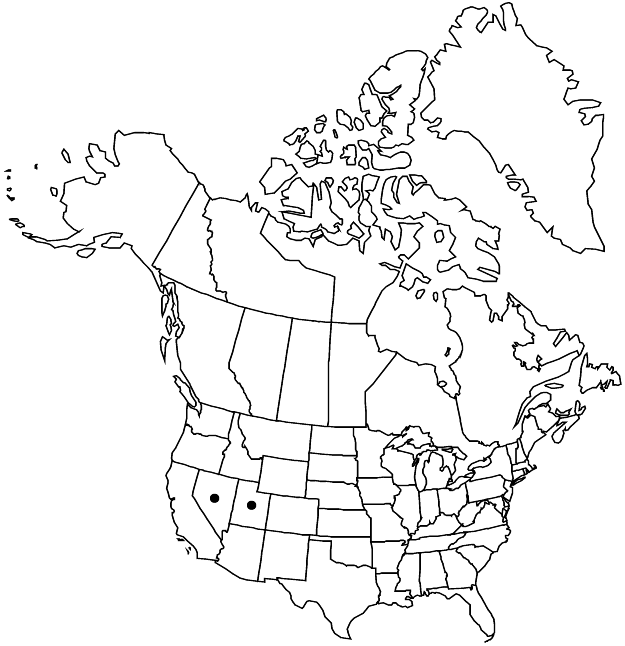Eriogonum villiflorum
Proc. Amer. Acad. Arts 8: 630. 1873.
Herbs, matted, not scapose, 0.01–0.05 × 0.1–0.6 dm, villous to silky-tomentose, grayish. Stems matted, with persistent leaf bases, up to 1/8 height of plant; caudex stems matted; aerial flowering stems spreading to prostrate, slender, solid, not fistulose, (0.05–)0.15–0.5(–0.8) dm, villous to silky-tomentose. Leaves basal, fasciculate in terminal tufts; petiole 0.05–0.1(–1.5) cm, silky-tomentose; blade narrowly elliptic, 0.3–1 × 0.1–0.2(–0.3) cm, villous to silky-tomentose, margins plane. Inflorescences subcapitate or cymose-umbellate, 0.3–0.9 × 0.5–1.2(–2) cm; branches dichotomous, villous to silky-tomentose; bracts 4–8, semileaflike, linear-lanceolate to lanceolate, 2–6(–8) × 0.3–0.7(–1) mm. Peduncles absent or erect, slender, 0.05–0.15 cm, villous to silky-tomentose. Involucres 1 per node, campanulate, (3.5–)4–5 × (3.5–)4–5 mm, rigid, tomentose; teeth 6–8(–13), spreading, 2–3 mm. Flowers 3–4.5 mm; perianth white to rose, pilose; tepals connate proximal 1/4, monomorphic, oblong to spatulate; stamens exserted, 3–4 mm; filaments glabrous proximally. Achenes light brown, 2.5–3 mm, glabrous.
Phenology: Flowering Apr–Jul.
Habitat: Gravelly to clayey flats and slopes, sagebrush communities, pinyon-juniper woodlands
Elevation: 1500-2400 m
Discussion
Eriogonum villiflorum is probably more common than now documented, the plants being inconspicuous and easily overlooked. It is known from Eureka, Lincoln, northeastern Nye, and White Pine counties in eastern Nevada, and from Beaver, Iron, Juab, Kane, Millard, Sanpete, and Tooele counties in western Utah. The Kane County type location is questionable, as it is well outside the known range of the species today. The sprawling flowering stems with large clusters of involucres and flowers are distinctive. The species is occasionally encountered in cultivation as a rock-garden plant.
Selected References
None.
